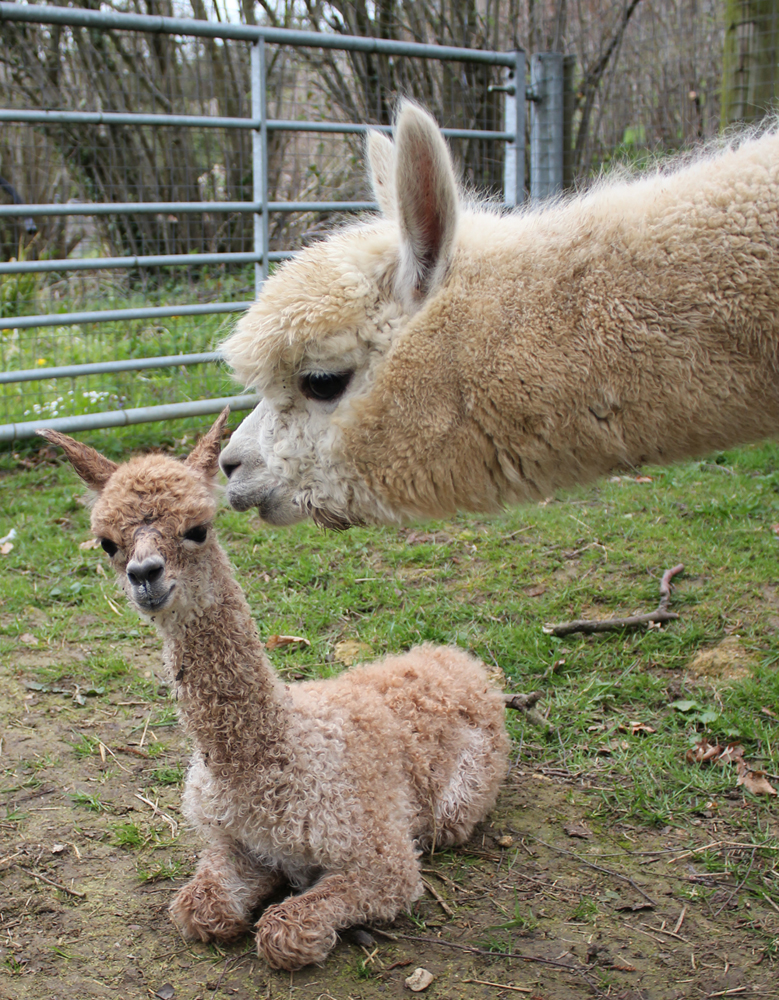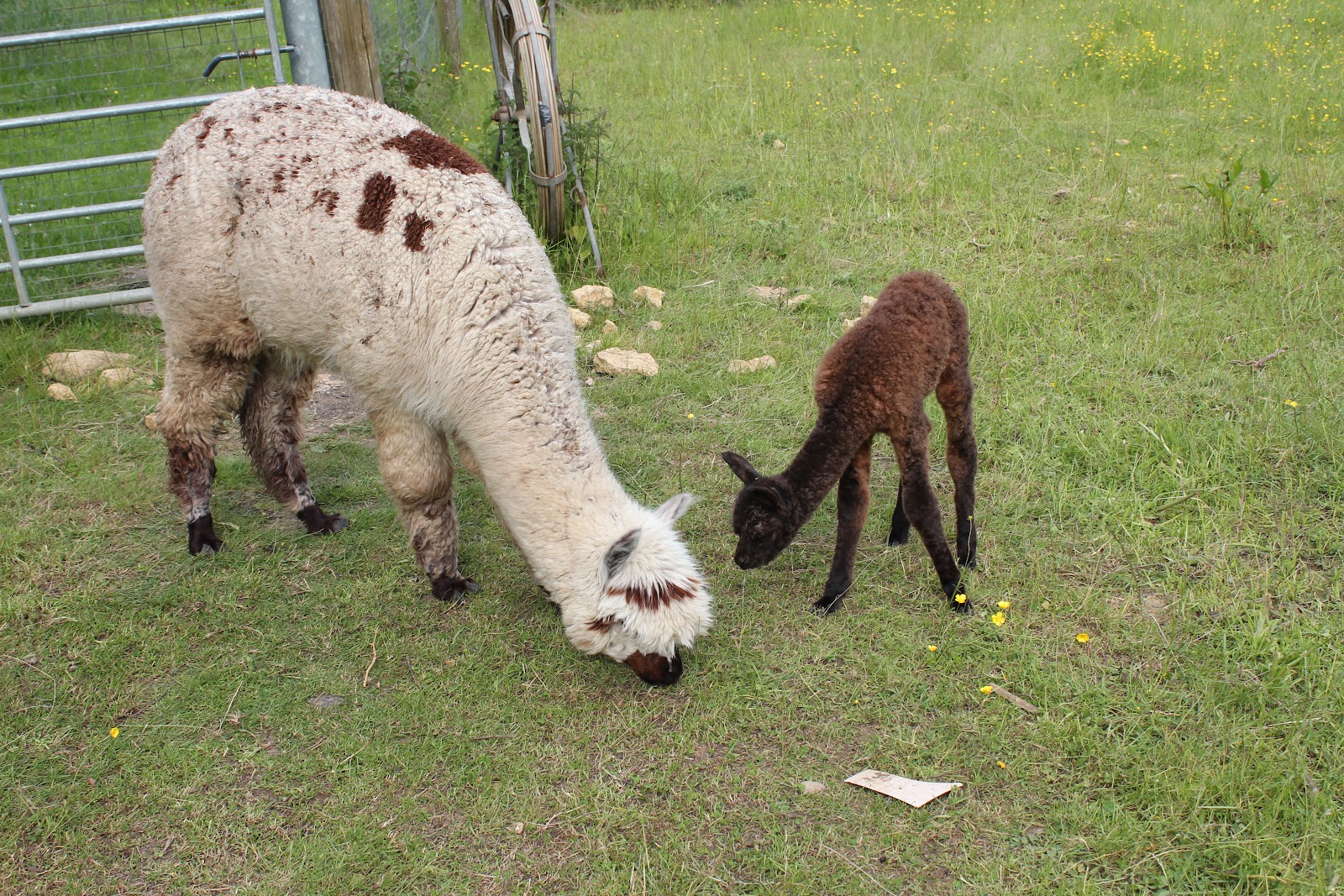One of the challenges of breeding dogs and ending up with seven of them when most people would normally choose to have one or two is organising individual time with each dog. When it's possible, I like to take out a daughter with her mother alone. The younger bitch I find learns a lot from having time with her mother as well as me, and their interactions together are different than how they behave with other dogs. Not that I think animals and their behaviour should ever be romanticised or anthropormorphised as they are quite interesting and lovable enough just as they are.
Breeder of black and brown Standard Poodles, rare breed farm animals, and alpacas near Bath.
Thursday, 8 December 2022
Wednesday, 10 August 2022
Poodle boy
Edit: this puppy has now found his family.
As a result of a cancellation, I have one brown poodle boy available to a suitable loving person/family. Please see 2022 litter 'Sausage Party' under the poodles section of the site or contact me if you would like more information or to come and meet him and his parents, two grandmas, a grandad, a half-aunt, and a second-cousin-once-removed and ask any questions. He would enjoy doing a sport with his person but would also fit in well with an active family or couple.
Sunday, 5 June 2022
Diverse Swards: 1 year on
Last year, I decided to seed some new grazing areas with diverse forage species, to benefit both my stock and the environment. The areas we established were of two different types: land that had been used for arable pretty much for living memory, and land disturbed by groundworks that had to be reseeded. The establishment and species balance has developed rather differently in each environment, even though the seed mix used was identical.
Orchard Paddock
This is an area that previously had been taken up by a Nissen hut that had reached the end of its life and an ancient summer house that had collapsed. The buildings had over time become engulfed in the hedge and a stand of fruit trees that had self-seeded there, and the area surrounding them was covered with rubbish. The rubbish, the buildings, and the concrete slab they stood on were removed. The hedge was cut back and the fruit trees were pruned and the dead and damaged trees removed for firewood. The soil in the area was high in organic matter from the buildup of dead leaves and plant matter over the decades, so it was spread out evenly and seeded.
Here, chicory is the dominant plant, and has produced a dense stand of flower stems which attracts flocks of goldfinches. Part of the plans for this paddock were to use it to put alpaca mothers with young crias as it's easy to keep an eye on them there, but it's so overgrown at the moment that the crias would probably get lost. The sweet clover (the yellow-flowered thing) seems to like it here too.
My Sewer Runneth Over
This is a paddock reclaimed from an area that has been depleted by arable farming over many years. The soil is clayey brash that seems to contain little organic matter. The paddock was seeded with grass a few years ago, which performed poorly, with the exception of one small area that many years ago, a malfunctioning sewer used to regularly flood. Last year it was overseeded with the same seeds used elsewhere. The seeds established well considering they were broadcast on the existing sward just before heavy rain was due. Here, legumes dominate, with sainfoin and clovers beginning to bloom. There is very little chicory.
Wildflower Meadow
This ground is pretty much identical to the sewer paddock, which it lies next to. In addition to the same seed mix used in the other areas, wildflower seeds were scattered, and some of these are flowering. Wildflower meadows are not supposed to be grazed or cut during the spring and early summer, and the sainfoin and birdsfoot trefoil are doing well here.
Thursday, 2 June 2022
The Trivers-Willard Hypothesis and How it Relates to Animal Breeding
Why is this? The most obvious answer to the question is that it's just Sod's Law. With most domestic animals, more females are kept for breeding than males. I only have space to keep three mature males, which means I have to sell the males born here unless one is intended to replace one of the incumbent males (whom I must then sell to make room). It just seems an ironic twist of nature that I get more of the sex least useful to my programme. Or is it? Anecdotally, a lot of animal breeders seem to report a dearth of females born in the early years of their breeding programme.
There is a little-known scientific theory to do with the ratios of males to females born, and that is the Trivers-Willard hypothesis.
The Trivers-Willard hypothesis applies chiefly to mammalian species who are uniparous, that is, whose females typically produce a single offspring per pregnancy. The logic behind it goes like this: uniparous mammals embody a reproductive strategy whereby most females who survive to adulthood will reproduce, but breeding for males is highly competitive and most males who survive to adulthood do not get to do it. This strategy is a compromise between the mutually exclusive goals of maximising evolutionary selection and maximising production of the next generation. If both sexes competed aggressively for the right to breed, the result would be a reduced but highly adapted population. If everyone bred indiscriminately, the result would be a large population that perhaps isn't adapted so well to its environment and to survival. Evolving one sex that invests heavily in the reproductive process and the other to invest little but to be exposed to aggressive natural selection provides some of the benefits of both.
For males, the pathway to reproductive success is clear: be the strongest and the best adapted to your environment, and leave the rest to the females to sort out. But females, it seems, may have evolved their own strategy which is rather more subtle. For a female, who is likely to produce offspring but can produce far fewer of them than a successful male can, the sex of the offspring she produces matters to her 'selfish genes'. If she produces sons and they are successful, her genetic material will be inherited by many grandchildren. If she produces daughters, as long as the daughters survive, the daughters will likely produce some grandchildren regardless of whether they are successful or not. Producing sons is a genetic high-risk, high-reward strategy, whereas producing daughters is more of a hedged bet.
So, if a female has the ability to raise a competitive son (bearing in mind that environment as well as genetic material play a big part in the son growing up to be competitive) the payoff for having a male offspring is likely to be high. If she doesn't have this ability, she is better off in terms of genetic survival having a daughter. In practical terms, the ability to produce a strong offspring depend on her ability to feed it, which is dictated by her ability to feed herself and hence her body condition, and in social animals, her social rank in her group.
It is not understood how females are able to influence the sex weighting of their offspring, but it's possibly to do with the conditions in the reproductive tract favouring one 'flavour' of sperm, as chromosomal weights on the cellular scale mean x-bearing and y-bearing sperm are quite different to each other.
Studies of the Trivers-Willard hypothesis produce mixed results, probably because these variables are complicated and some of them, in particular social rank, are difficult to measure. A lot of the research on it tries to apply it to humans, which isn't particularly helpful to animal breeders (humans are weird animals with weird social behaviour and findings in them probably aren't relevant to other animals). But if we assume the TWH does cause an effect and it is relevant to domestic animals like alpacas, how might this relate to breeders early and later in their breeding programme, and the anecdotal observation that a lot of breeders have a high ratio of males to females early in their programme?
First of all, breeders start with a number of animals they intend to increase, therefore a small breeding programme at its outset tends to be understocked for the land it has access to, and the animals tend to be well-nourished and at risk of being overnourished and getting fat. Well-nourished animals, according to the TWH, tend to have well-nourished offspring, which in an environment where natural selection occurs (rather than breeder selection based on fleece quality and other factors that are completely abstract to nature) means they can benefit from having sons.
Secondly, the TWH postulates that social rank of the mother is important, as her offspring's social rank benefits from her standing. Social rank in animals is greatly misunderstood, as many people anthropomorphise success relating to wealth or social castes and bullying in people, or assume it is to do with strength and fighting, which it might be to some extent in males, but in females it is not. A high-ranking female is simply an older or experienced one who has a calm and confident nature that inspires trust and cooperation in the younger ones. She knows the land where she lives, she knows how to survive and to support her herdmates, she has seen countless births, and knows just what she can do to encourage a new first-time mother. In stable, established groups of social animals as they occur in their most natural state, the high-ranking females are old matriarchs accompanied by their 'lower ranking' daughters and grand-daughters. This is quite the opposite from the social situation of a new breeding programme, which has likely obtained a small number of females who are probably not related and have no proper hierarchy whatsoever and just make friends and muddle along together as best they can.
So, while in a larger and more natural social group, the older experienced animals might be more likely to have sons and the younger ones more likely to have daughters, in a newer and less established group where everyone has plenty and everyone thinks they know everything, the Trivers-Willard hypothesis might go some way to explain why male offspring are more likely!
Sunday, 20 March 2022
Spring at Last
Every spring, I take a picture of the magnolia tree. A piece of plastic has been blown up it during the recent storms this year, which I need to get down before the leaves grow again.
Wednesday, 16 February 2022
Plant A Tree
Plant a tree. Or, if your budget will stretch that far, plant two trees. If you really have more money than you know what to do with, you could plant a copse, spinney, wood, or forest.
Sunday, 30 January 2022
Adhara & Pan
So now it's two toys and Pan has the other part.














